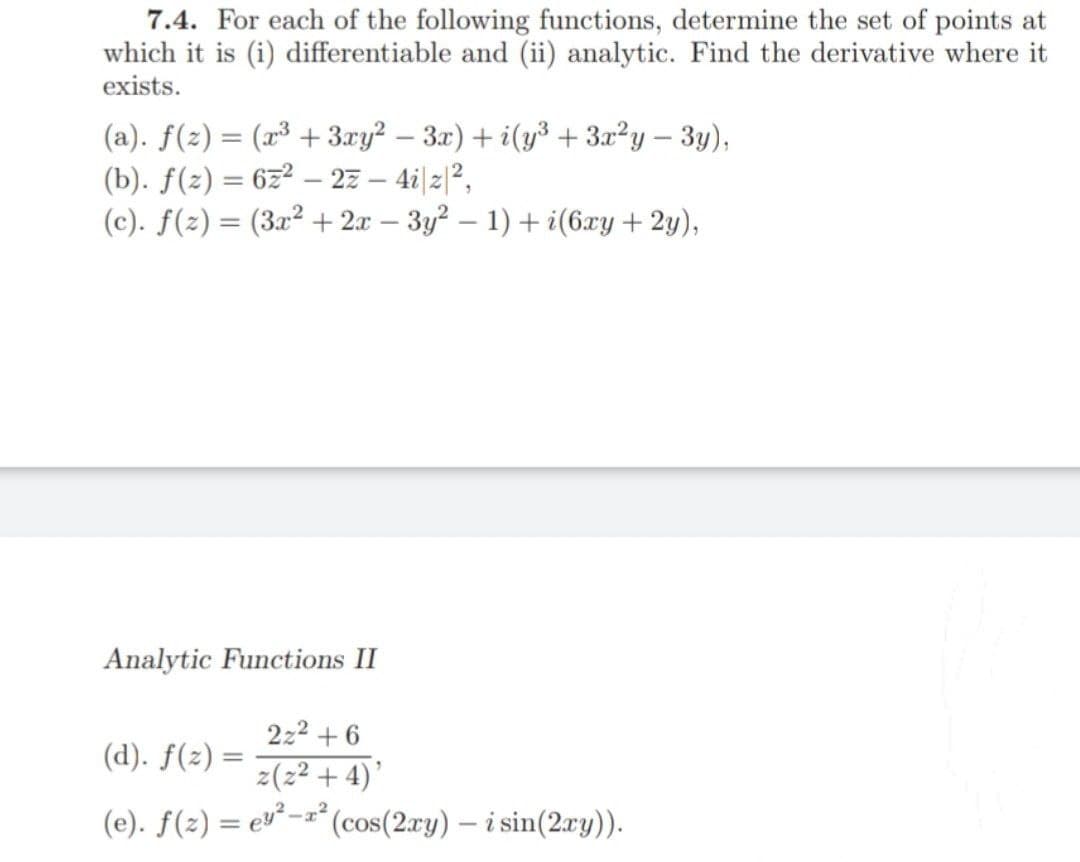7.4. For each of the following functions, determine the set of points at which it is (i) differentiable and (ii) analytic. Find the derivative where it exists. (a). f(z) = (x³ + 3xy² − 3x) +i(y³ + 3x²y - 3y), (b). f(z) = 6z² - 2z - 4i|z|², (c). f(z) = (3x² + 2x - 3y² - 1) + i(6xy + 2y),
7.4. For each of the following functions, determine the set of points at which it is (i) differentiable and (ii) analytic. Find the derivative where it exists. (a). f(z) = (x³ + 3xy² − 3x) +i(y³ + 3x²y - 3y), (b). f(z) = 6z² - 2z - 4i|z|², (c). f(z) = (3x² + 2x - 3y² - 1) + i(6xy + 2y),
Algebra & Trigonometry with Analytic Geometry
13th Edition
ISBN:9781133382119
Author:Swokowski
Publisher:Swokowski
Chapter7: Analytic Trigonometry
Section7.6: The Inverse Trigonometric Functions
Problem 93E
Related questions
Question
I need a clear answer by hand, not by keyboard | dybala

Transcribed Image Text:7.4. For each of the following functions, determine the set of points at
which it is (i) differentiable and (ii) analytic. Find the derivative where it
exists.
(a). f(z) = (x³ + 3xy² − 3x) +i(y³ + 3x²y - 3y),
(b). f(z) = 6z² - 2z - 4i|z|²,
(c). f(z) = (3x² + 2x − 3y² − 1) +i(6xy + 2y),
Analytic Functions II
2z² +6
z(z² + 4)'
(e). f(z) = ey²-² (cos(2xy) - i sin(2xy)).
(d). f(z) =
Expert Solution
This question has been solved!
Explore an expertly crafted, step-by-step solution for a thorough understanding of key concepts.
Step by step
Solved in 3 steps with 3 images

Recommended textbooks for you

Algebra & Trigonometry with Analytic Geometry
Algebra
ISBN:
9781133382119
Author:
Swokowski
Publisher:
Cengage

Algebra & Trigonometry with Analytic Geometry
Algebra
ISBN:
9781133382119
Author:
Swokowski
Publisher:
Cengage